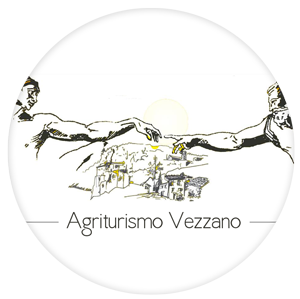STORIA
OUR HISTORY
The farm represents the realization of a dream: transforming a memory into reality. For this reason Gabriele, the owner, restored the houses and barns of the ancient village (part of his childhood) and maintains its fields and woods, in order to offer demanding tourists a simple lifestyle made of rythms, products and services linked to the territory.
The aim of this project is to preserve and enhance the artistic and historical heritage of the territory, in order to make it available not only to tourists but also to the local community, in a renewed bond of belonging and hospitality.
It was a choice dictated by the research for quality and the desire to recover a lifestyle that represents above all quality, tradition and social relations. Tourists become, therefore, part of the village and share its rythms and customs by becoming temporary residents.
The complex is naturally diversified, as each apartment retains the architecture linked to its original function, even though the drying room, the shed and the stables have been restored in a new perspective, based on the values of sustainability and respect for the environment.
VEZZANO
VEZZANO
Vezzano is a small village located about 800 metres above sea level on the ridge which divides the valley of the river Arno (Casentino) from the valley of the river Tiber (Valtiberina).
The ancient road system, the importance of which since Etruscan and Roman times is demonstrated by archeological finds and place names, passed by the church of Santa Maria dell’Assunta in Vezzano and connected Florence to the region of Romagna. Therefore the village was, very probably, an active and frequented centre since its ancient origins, which are much more remote than those of the nearby Shrine of La Verna, made famous by Saint Francis and artists of all ages.
During the Middle Ages Casentino was characterized by the phenomenon of fortification. The feudal lords of Rocca Vezzana, namely the castle of Vezzano and Chiusi (the neighbouring village), were the Counts Cattani, who promoted the church of Vezzano to parish church. On the 8th of July 1214 Count Orlando Cattani met Saint Francis and donated him Mount “Alvernia” as a favourable place for spiritual meditation. In 1224 Saint Francis arrived at La Verna for the first time and from this moment on the history of Vezzano and Chiusi in Casentino (it will become Chiusi della Verna in 1922) became inextricably linked to that of the Shrine.
After the feudal era, the magnificent castle of the Counts Cattani called “Il Cassero” became the property of the Republic of Florence and in 1474 Lodovico Buonarroti Simone became chief magistrate of Chiusi and Caprese. It was along the ancient road to Vezzano that Francesca, the eight month pregnant wife of the chief magistrate, fell from horseback and gave birth to her son Michelangelo. It is said that the event happened in Camaione, a very close farm to Vezzano. Francesca found shelter in the farmhouse of Valmaggio and her son was christened in the church of Santa Maria dell’Assunta in Vezzano, the patron saint of which is precisely the Arcangel Saint Michael. This church still retains the original baptismal font.

